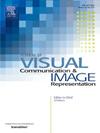EPSA-VPR: A lightweight visual place recognition method with an Efficient Patch Saliency-weighted Aggregator
IF 2.6
4区 计算机科学
Q2 COMPUTER SCIENCE, INFORMATION SYSTEMS
Journal of Visual Communication and Image Representation
Pub Date : 2025-04-22
DOI:10.1016/j.jvcir.2025.104440
引用次数: 0
Abstract
Visual Place Recognition (VPR) is important in autonomous driving, as it enables vehicles to identify their positions using a pre-built database. In this domain, prior research highlights the advantages of recognizing and emphasizing high-saliency local features in descriptor aggregation for performance improvement. Following this path, we introduce EPSA-VPR, a lightweight VPR method incorporating a proposed Efficient Patch Saliency-weighted Aggregator (EPSA), additionally addressing the computational efficiency demands of large-scale scenarios. With almost negligible computational requirements, EPSA efficiently calculates and integrates the local saliency into the global descriptor. To quantitatively evaluate the effectiveness, EPSA-VPR is validated across various VPR benchmarks. The comprehensive evaluations confirm that our method outperforms existing advanced VPR technologies and achieves competitive performance. Notably, EPSA-VPR also derives the second-best performance among two-stage VPR methods, without the need for re-ranking computations. Moreover, the effectiveness of our model is sustainable even with considerable dimension reduction. Visualization analysis reveals the interpretability of EPSA-VPR that after training, the backbone network learns to attach more attention on the task-related elements, which makes the final descriptor more discriminative.
EPSA-VPR:一种基于高效斑块显著性加权聚合器的轻量级视觉位置识别方法
视觉位置识别(VPR)在自动驾驶中非常重要,因为它使车辆能够使用预先构建的数据库识别自己的位置。在这一领域,先前的研究强调了识别和强调描述符聚合中高显著性局部特征的优势,以提高性能。在此基础上,我们引入了EPSA-VPR,这是一种轻量级的VPR方法,结合了提出的高效补丁显著性加权聚合器(EPSA),另外还解决了大规模场景的计算效率需求。EPSA的计算需求几乎可以忽略不计,它可以有效地计算并将局部显著性集成到全局描述符中。为了定量评估有效性,EPSA-VPR在各种VPR基准中进行了验证。综合评价表明,该方法优于现有先进的VPR技术,具有一定的竞争力。值得注意的是,EPSA-VPR在两阶段VPR方法中也获得了第二好的性能,而不需要重新排序计算。此外,我们的模型的有效性是可持续的,即使有相当大的尺寸减少。可视化分析揭示了EPSA-VPR的可解释性,即经过训练后,骨干网络学会更多地关注与任务相关的元素,从而使最终描述符更具判别性。
本文章由计算机程序翻译,如有差异,请以英文原文为准。
求助全文
约1分钟内获得全文
求助全文
来源期刊

Journal of Visual Communication and Image Representation
工程技术-计算机:软件工程
CiteScore
5.40
自引率
11.50%
发文量
188
审稿时长
9.9 months
期刊介绍:
The Journal of Visual Communication and Image Representation publishes papers on state-of-the-art visual communication and image representation, with emphasis on novel technologies and theoretical work in this multidisciplinary area of pure and applied research. The field of visual communication and image representation is considered in its broadest sense and covers both digital and analog aspects as well as processing and communication in biological visual systems.
 求助内容:
求助内容: 应助结果提醒方式:
应助结果提醒方式:


